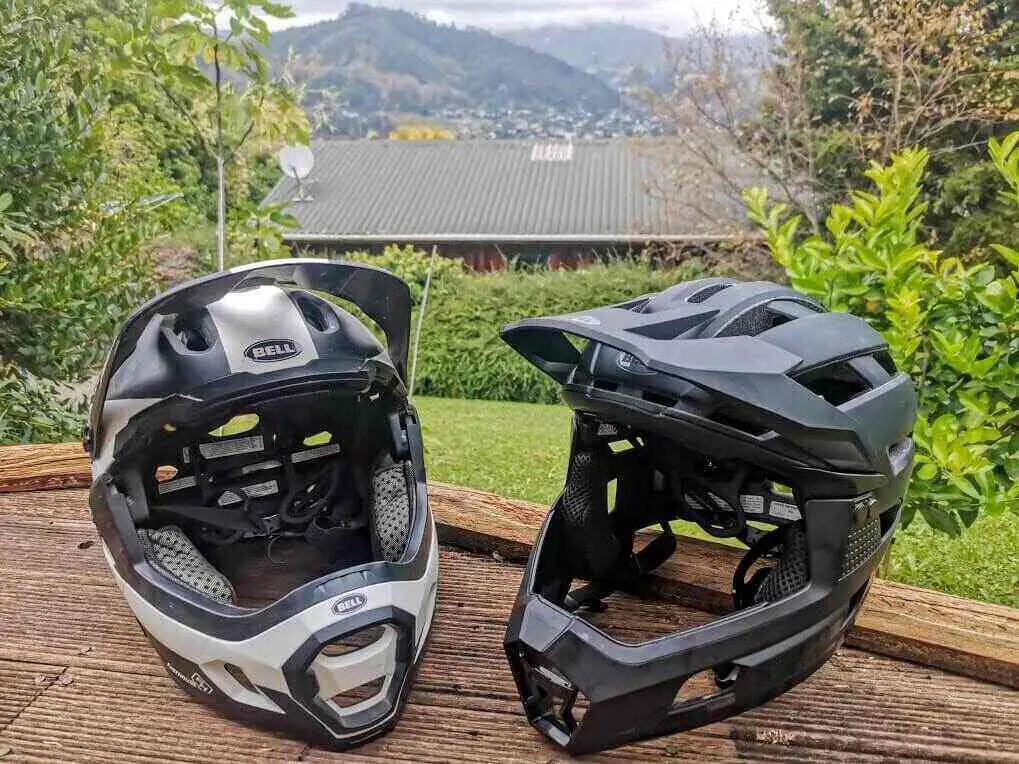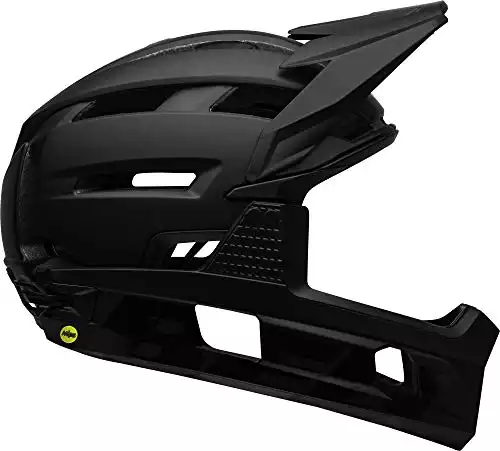Convertible helmets have changed the game in terms of safety in trail riding or versatility in Enduro and downhill helmets. Bell has been leading the way with their range of convertible lids, including these two excellent helmets that we are looking at here. The Bell Super Air R vs Bell Super DH looks into the differences between the helmets and which is better suited to you.
A convertible MTB helmet is a full-face helmet that you can convert into a standard half shell helmet. It does this by removing the chin-bar and lower portion of the helmet. The removable chin guard is attached by a very secure mechanism and a couple of latches. It only takes a matter of seconds to remove and reattach the chin guard (after a couple of practices!).
I personally ride to the park and do longer climbs with the chin bar detached, then reattach it for the descents. I find having a detachable chin bar extremely convenient, especially on hotter riders where having a full-face is too warm, but I need the extra protection for the downhill.
Bell Super Air R Review
The Bell Super Air R is aimed at trail riders wanting higher levels of protection while out riding. While the Super Air R is not downhill certified (a special certification that withstands more rigorous testing than a standard CPSC certification), it is still much, much safer than your standard half shell helmet.
It is insanely light, breathable, and comfortable. In both full-face and half shell, the helmet is a high-performing, top-of-the-line helmet.
Super light, super comfortable helmet proving a little extra protection when it is needed.
Pros
- Lightweight
- Very breathable
- Well ventilated
- Very comfortable
Cons
- Not downhill certified
Bell Super DH Review
The Bell Super DH MIPS helmet is aimed more for Enduro and downhill riders wanting a full-face lid, but with the advantage of being able to take the chin bar off for climbs. It is a little heavier and bulkier than the Super Air R, but with that comes higher safety ratings (it is fully downhill certified). And it is still way more breathable and lightweight compared to other downhill certified lids.
Sturdy, reliable, and comfortable, the Super DH is an excellent all-around helmet.
Bringing together the best of both worlds, a detachable chin bar makes for an easy climb and a safe descent. For the price of one, you get a top-of-the-line open face helmet and a fully certified downhill helmet that is comfortable, durable, and easy to use.
Pros
- Highly protective
- Downhill certified
- Very comfortable
- Looks good
Cons
- Heavier
- Less breathable
- Design Comparison
Design Comparison
Despite both coming from the Bell designers, the design of the two helmets is reasonably different. The Super Air R is noticeably thinner, with more and larger vents. The has a quite angular design, while the Super DH is a bit more rounded in shape. The Super DH is a fair bit burlier, with thicker foam and padding.
Personally, I prefer the look of the Super Air R. The finishing details give it a nice polished look. The one thing that does stand out is the back of the Super Air R. It has very few vents around the back of the helmet and instead has a plain, undetailed finish. This holds goggle straps well. This is uncommon on a mountain bike helmet and more common in road/time trial helmets! It still looks very cool though!
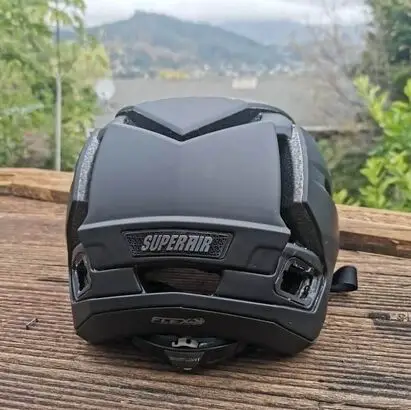
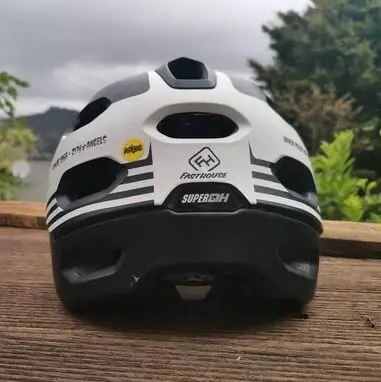
Both lids have the option of the ‘Fasthouse’ design (shown on the Super DH). This is a very distinctive ‘Bell helmet’ look. Otherwise, both lids come in a range of color options to suit any rider.
As a half shell lid, there is effectively no evidence that either helmet is a convertible lid. They both have very sleek designs and look like premium helmets in both half shell and full-face modes.
Construction Comparison
The Super Air R attaches with two separate latches, either side of the back of the head. The Super DH has three latches, one on either side and another to clip that the back. Both attach fairly similarly, and neither one is easier or harder to attach over the other.
Below is the Bell Super Air R in full-face mode, and half shell mode.
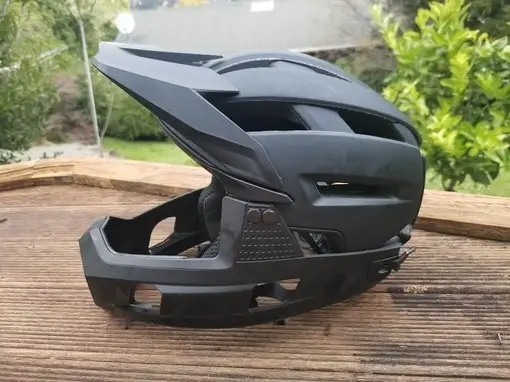
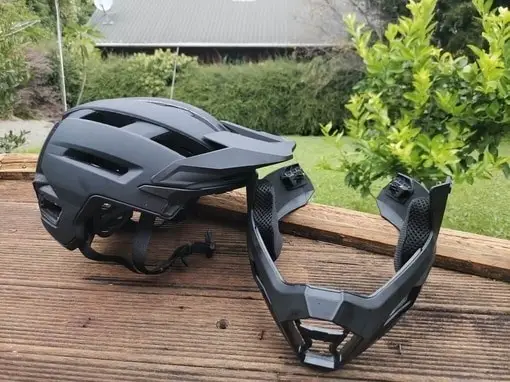
Below is the Bell Super DH in full face and half shell modes.
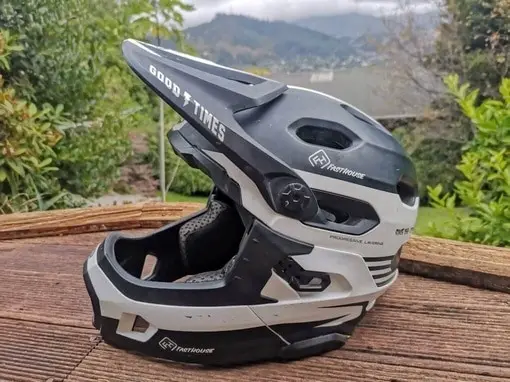
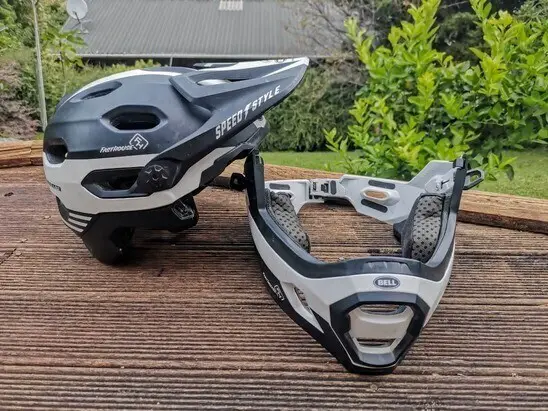
The visor on the Super Air R has three set locations, with the highest setting accommodating goggles if you want to store them beneath the visor when not in use. The Super DH helmet has an adjustable visor but has no set locations, so you can move it to where ever suits you. The visor also is compatible with goggles if you wish to store them below the visor.
Both are constructed using fusion in-mold construction. In-mold construction basically means the outer shell is well molded to the inner shell for improved durability. This also improves the structural integrity of the helmet, which you can definitely see and feel when you have it in your hands (or on your head).
The two helmets use Bell’s float fit retention system. This basically means you can get a very refined fit with either helmet, which significantly improves the safety of the helmet.
Both helmets have great coverage of the head in both modes. As a half shell, the Super DH covers a bit more of the back of the head than the Super Air R. The Super Air R also sits a bit higher over the ears, so less of the head is protected in a crash.
Safety Comparison
As stated earlier, the Super Air R is NOT downhill certified (ASTM F1952). In order to achieve a downhill certification, it needs to withstand a few more tests than the normal CPSC certification (for more information on testing, see here). However, it is still much safer than your standard half shell helmet. Hence the Super Air R appeals largely to trail riders wanting a bit more protection.

The Super DH is a little burlier, a bit heavier, and has achieved the downhill certification. The makes the Super DH a very attractive option for Enduro riders and Downhill riders in particular.

Both helmets have a very cool new technology called the MIPS Spherical Flex. This technology is available only in Giro and Bell helmets and is a step up from the standard MIPS helmet. Basically, there are two layers of foam that can rotate relative to one another. The outer layer is EPS (expanded polystyrene) which absorbs higher energy impacts. The inner layer of EPP (expanded polypropylene) is softer and hence absorbs lower energy impacts. These two shells dissipate both direct and angular impacts and distribute the energy away from the rider’s head.
Effectively this technology reduces the possibility of damage occurring to the brain or skull.
Ventilation Comparison
The winner of both the ventilation and weight goes to the Bell Super Air R. I rode with the Super Air R up a few hills, and I honestly thought it was great. I definitely got a bit sweatier than if it was in the half shell mode, but it was easy to breathe through and wasn’t all that hot.
The Super DH on the other hand, is a pretty hot helmet. Even in half-shell mode it doesn’t compare with the likes of the Super Air or the Specialized Ambush for ventilation. But is still a lot better than any other downhill lid.
In more specific detail, the Super Air R has 18 helmet vents, eight chin bar vents, and four over brow vents. While the Super DH has 19 helmet vents, four chin bar vents, and two over brow vents. But the vents on the Super DH are much smaller than the vents on the Super Air R.
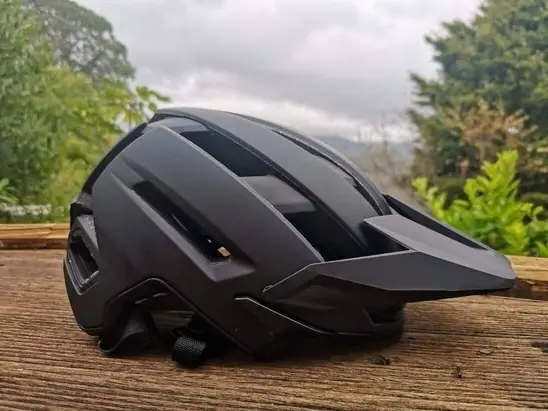
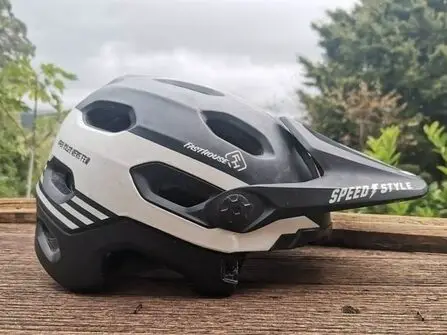
MIPS Spherical helps with the ventilation in both helmets by allowing air to flow through the two separate layers. This improves the air flow, cooling down your head quickly as you ride.
Weight Comparison
Both helmets are pretty light mountain bike helmets. For a size medium, with the chin guard attached, the Super Air R weighs in at 640g. The Super DH is a bit heavier for the same at 880g.
For comparison, the Fox Rampage (one of the most popular full-face lids) weights a little over 1000 g. And a typical half shell helmet weighs around 400 g. So both helmets are exceptionally light!
Comfort Comparison
Neither helmet struggles in terms of comfort! Both have very plush padding that is strategically placed to maximize comfort for the rider.
Without the chin-bar, both helmets are similar in terms of comfort. The main difference is the cheek pads. The Super DH has padding that comes a little further around the cheeks. This makes talking a breathing a little harder but keeps your face very secure.
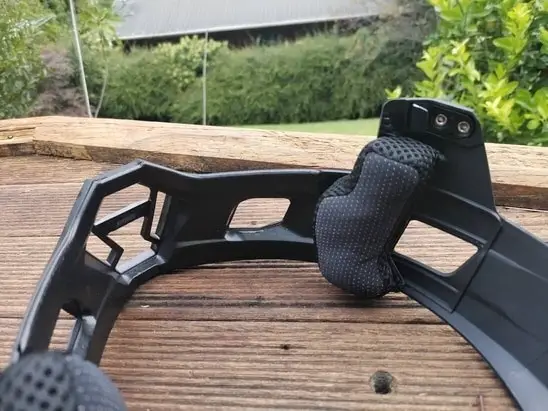
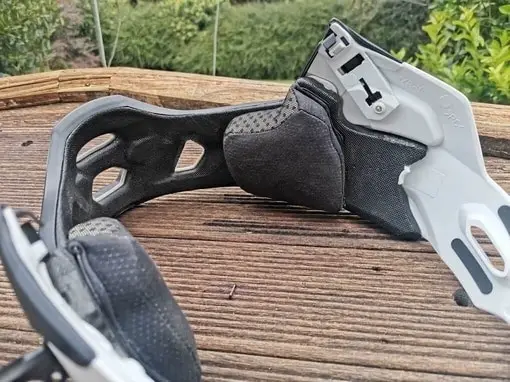
The Super Air R has padding that stops a little way along the cheekbone, allowing complete freedom in the front part of the face. I find this much more comfortable for me, given I have quite a round face that was restricted a bit by the Super DH. It certainly made breathing and talking a lot easier!
Another thing I noticed was how easy it was to hear people and cars while riding in the Super Air R. There is no padding nor foam covering your ears, so it is very easy to hear cars or riders coming from behind you. And very importantly, you can hear your mates as you shred the trails!
Features Comparison
On top of the removable chin bar, these helmets are both fully kitted out. Both helmets come with integrated camera mounts. The bonus of this is that they are designed to break away if you do crash, so no damage occurs to your head.
They both have X-static padding, which is ultra-absorbent and prevent odor build-up. This is achieved by having silver threads through the padding that is anti-microbial, so gone are the days of sweaty smelly helmets!
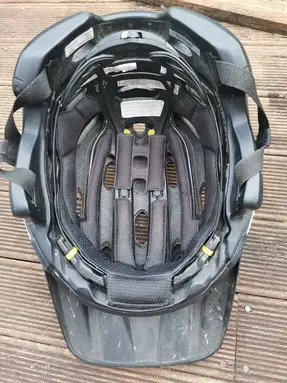
The Super DH also has a Fidlock buckle. This is basically a magnetic buckle that slides into place and is super easy to use. There is no real advantage of it that I can see, but it is pretty cool!
For those riders who wear goggles or glasses while riding, you will be happy to hear that both helmets easily accommodate eyewear. They can also be stored below the visor when not in use, which is pretty handy.
Final Thoughts
In terms of the winner in the Bell Super Air R vs Super DH, we have come to the following conclusions. The Super DH is the safer helmet, but the Super Air R wins in terms of the ventilation, weight, and comfort. Both helmets are fairly similar in terms of construction, design, and features. Hence it depends if you need better safety technology or if that technology is going to be overkill for you.
The biggest flaw of the Super Air R is the lack of downhill certification. However, for the rider who doesn’t necessarily need a downhill helmet, it offers a huge range of advantages in terms of performance. While the Super Air R is super light and may feel a bit thin, it is in no way flimsy nor cheap quality. The helmet is incredibly sturdy and is an excellent choice for a trail rider wanting more protection when trying out new or gnarlier tracks.
The Super DH has always been and will be, for a long time, one of the best value helmets on the market. Effectively you are getting a high spec but lightweight downhill helmet, as well as an excellent trail helmet for the price of one helmet.
In conclusion, the Super DH (see full review here) is the safer option for Enduro and downhill riders. Whereas the Super Air R (see full review here) is a lighter, less bulky helmet that is perfectly safe for a trail rider wanting a bit more protection.
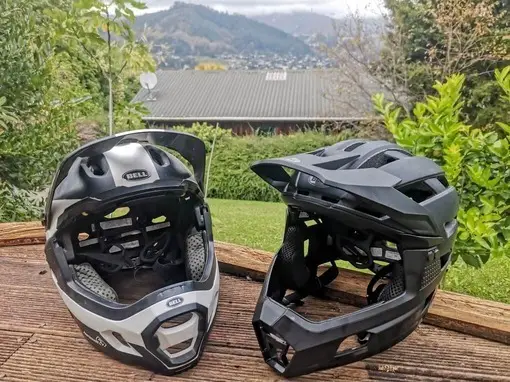
If you are also considering the Bell Super 3R, have a look at the comparison between the Super DH and the Super 3R.
